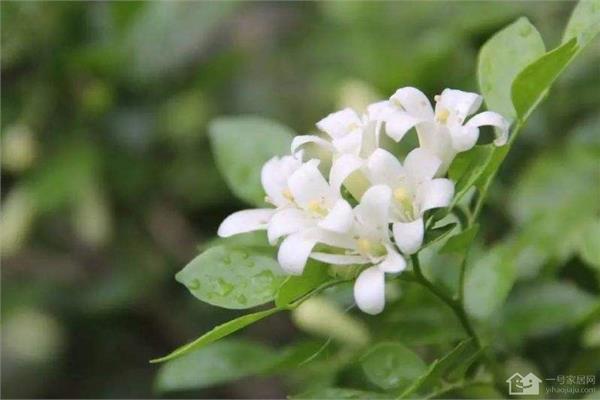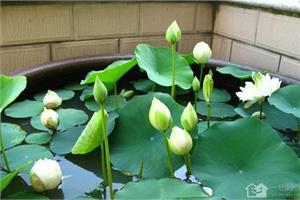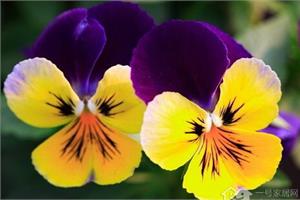Nocturnal incense growing environment tips for maintaining nocturnal incense
Night incense is one of our more common flowering plants, which is often planted in the courtyard and other places at home. Night incense mainly blossoms at night, and the fragrance of the flowers is very strong. I don't know where to put it in the room, but the ornamental arrangement in the courtyard and other places is still very good. Let's take a look at the breeding methods of night incense.

First, the growing environment of evening primrose
Nocturnal incense mainly grows in the jungles of subtropical and warm temperate regions. It likes warm, humid, sunny and dry climate. It has strong adaptability to the environment, exuberant vitality and developed root system. It mainly grows in the soil with good drainage and fertile soil. It begins to blossom every spring and the flowering period is very long. It requires a higher temperature, the average annual temperature is controlled at about 20 degrees Celsius, night incense is a fertilizer-loving plant, so it is necessary to fertilize a small number of times in the process of its growth. Nocturnal incense also has high water requirements, watering more in hot summer, keeping the soil moist in winter but keeping waterlogging in mind.
2. Tips for the maintenance of evening incense
1. Choose the insert. The branches with strong growth and free of diseases and insect pests should be selected, and the sunny branches in the middle and upper part of the year should be selected on the same plant, requiring short internodes, strong branches and leaves, full bud tips, and unsuitable branches and overgrown branches that are about to bloom.
2. Select the matrix. The bed soil prepared with peat soil and rotten leaf soil is 3 ∶ 3 ∶ 4 respectively. The bed soil prepared in this way has the characteristics of increasing bed temperature, water retention, aeration, fertility and partial acidity, and is suitable for branches to take root and sprout.
3. Deal with cuttings. The cuttings were treated with ABT rooting powder before cutting, which had the effect of promoting rooting. Cut the cuttings into a section of 8 to 12 centimeters, with 2 to 3 buds above. The cut in the lower part of the cuttings should be 0.5 centimeters below the node, and the cut should be smooth, cutting off the lower leaves, leaving only 2 to 3 leaves at the top. The insertion depth is generally about 3 centimeters.
4. Conditions for rooting. The suitable rooting temperature is 20 ℃ to 24 ℃, and the soil temperature is 3 ℃ to 5 ℃ higher than the air temperature. The relative humidity of the bed air is 80% to 90%, which is favorable for rooting and requires light of about 30%. The moisture should be suitable, which is slightly higher at the initial stage and slightly dry at the later stage. The suitable period for local open-field planting is from early May to mid-June, when the climate is better, which can better meet the temperature and humidity conditions needed for cuttings to take root.
5. Strengthen the management after insertion. After insertion, it should be watered thoroughly, covered with plastic film, placed in a shaded place, or sprinkled with grass on the film to prevent direct sunlight, and increase light at night to help it survive. Air is released once or twice a day to replenish the oxygen needed and prevent diseases. To often spray water, keep the inserting bed moderately moist, but do not spray too much water, otherwise the inserting bed is too wet, often affecting the cuttings healing and rooting. When the new root grows to 2 to 3 meters, it can be transplanted into the basin at the right time.
Finally, if summer is the peak growing season, the basin soil must be kept moist regularly and watered twice a day, except for adequate fertilizer. If it is a seedling, it should be sprayed to the leaves once or twice a day. After the arrival of winter, it should be moved indoors, such as the temperature is lower than 5 ℃, the leaves will wither and fall off until death, so friends in the north should think twice. In this process, it should also be noted that it is best to apply fertilizer every two or three months, and pay attention to the prevention and control of diseases and insect pests.
The above is the relevant introduction of this article, I believe you have a simple understanding of this after reading it, if necessary, you can continue to pay attention to the No. 1 home network for more information.
- Prev

How to cultivate bowl lotus and teach you how to grow bowl lotus
How to cultivate bowl lotus and teach you how to grow bowl lotus
- Next

I have heard the tricolor pansy language and legends that flowers and plants in the world are also "thinking".
I have heard the tricolor pansy language and legends that flowers and plants in the world are also "thinking".
Related
- Wuhan Hospital Iron Tree Blooming Result Was Instantly Frightened by the Gardener Master
- Which variety of camellia is the most fragrant and best? Which one do you like best?
- What is the small blue coat, the breeding methods and matters needing attention of the succulent plant
- Dormancy time and maintenance management of succulent plants during dormancy
- Minas succulent how to raise, Minas succulent plant pictures
- What are the varieties of winter succulent plants
- How to raise succulent plants in twelve rolls? let's take a look at some experience of breeding twelve rolls.
- Attention should be paid to water control for succulent plants during dormant period (winter and summer)
- Watering experience of twelve rolls of succulent plants
- Techniques for fertilizing succulent plants. An article will let you know how to fertilize succulent plants.

